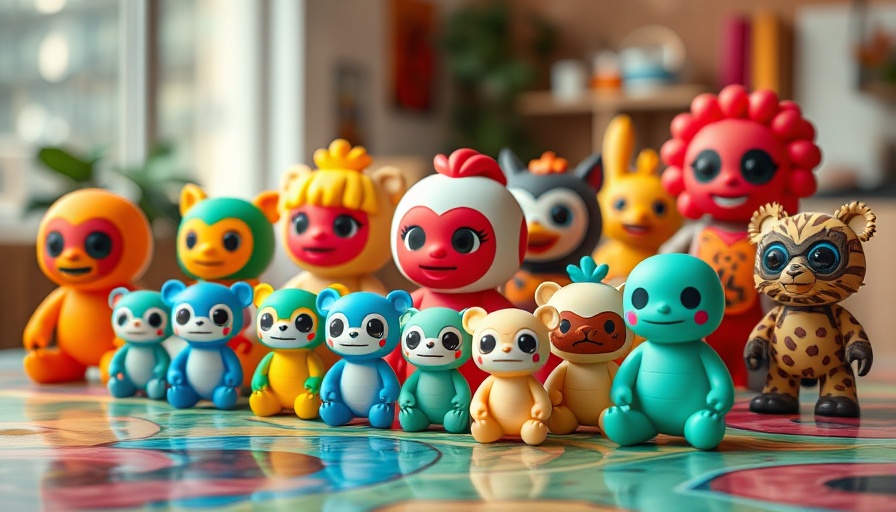
The Surge of Labubu: A Billion-Dollar Icon in the Toy Market
In just a decade, Labubu, a plush monster toy created by Pop Mart, has morphed from an obscure toy to a cultural phenomenon, potentially phenomenally raking in $1 billion in revenue this year alone. The plush toy turned lifestyle accessory—popularized by A-list celebrities like Lisa from BLACKPINK, Kim Kardashian, and Cher—has transcended mere play to become a symbol of status among younger generations. Through its innovative “blind box” sales model, Labubu has captured imaginations worldwide, effectively revolutionizing the toy industry.
The Power of Celebrity Influence
The ascent of Labubu is emblematic of how celebrity endorsements can galvanize consumer interest. When BLACKPINK’s Lisa publicly declared her fascination with the plush, it sent ripples through social media, igniting an obsession among fans. The phenomenon of influencers and their impact on trends is a powerful reminder of how taste can shift rapidly in the current digital age. From Instagram to TikTok, Labubu's visibility has ballooned, contributing significantly to its rising sales—estimated at $670 million in the first half of 2025 alone.
Understanding the Blind Box Trend
The novelty of collecting toys in “blind boxes” plays a crucial role in Labubu’s success. Buyers are drawn by the thrill of the unknown—what character will they receive? This method not only boosts sales but also encourages repeat purchases, as consumers aim to collect the entire series. This strategy has proven effective across various markets, including fashion and collectibles, illustrating a broader change in consumer behavior focused on experiences over products.
A Cultural Milestone: Q&A on the Implications of Labubu's Popularity
As Labubu prepares for this monumental financial year, it raises questions about the sustainability of such trends. Will Labubu maintain its prominence in an industry where everything is subject to the fickle nature of consumer interest? Experts suggest that understanding the centennial evolution of toys—shifting from tangible play items to collectibles—could inform future strategies within the toy and entertainment sectors.
Potential Risks and Challenges in the Toy Industry
Despite its success, Labubu could face challenges along its trajectory. The rapid increase in popularity can sometimes lead to market saturation. Companies like Pop Mart must navigate the delicate balance of maintaining excitement while expanding their product lines. If the novelty wears off, there’s a risk that Labubu could become just another fad in a market full of competition. Moreover, the reliance on social media accounts for much of its visibility exposes it to the unpredictable dynamics of digital marketing.
Conclusion: What Sets Labubu Apart?
The Labubu phenomenon illustrates a larger trend of merging collectibles with fashion, appealing deeply to millennials and Gen Z consumers alike. With its charming design, iconic status among celebrities, and strategic marketing, Labubu is not just a toy; it's an emblem of culture and community. As we look ahead, it will be fascinating to see how Labubu’s story unfolds and what it means for future toy innovations.
 Add Row
Add Row  Add
Add 



Write A Comment